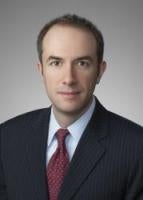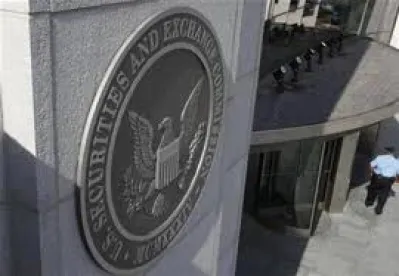On March 27, 2019, the Supreme Court of the United States issued its decision in Lorenzo v. Securities and Exchange Commission, 587 U.S. ___ (2019) curtailing any meaningful distinction between liability of a statement maker and a statement’s messenger under SEC Rule 10b-5 that remained unresolved since the Court’s ruling in Janus Capital Group, Inc. v. First Derivative Traders, 564 U.S. 135 (2011). Lorenzo also brings into sharper focus the availability of primary liability pursuant to Rule 10b-5, for persons previously not targets of private securities actions after the Court’s holding in Central Bank of Denver, N.A. v. First Interstate Bank of Denver, N.A., 511 U.S. 164, 191 (1994) (holding that there is no private right of action against a party who is a mere “aider and abettor” to a Rule 10b-5 violation).
Frank Lorenzo was the director of investment banking at Charles Vista, LLC, a registered broker-dealer in New York. Charles Vista, LLC’s then only investment banking client was Waste2Energy Holding, Inc., who was offering $15 million in debentures. Lorenzo sent an email to two prospective clients regarding the offering. The entire content of the emails was drafted by, and expressly sent at the request of, Lorenzo’s supervisor. The emails stated that Waste2Energy had $10 million in “confirmed assets,” although the company had publicly disclosed, and Lorenzo knew, that Waste2Energy’s assets were virtually worthless.
The SEC brought an administrative action against Lorenzo including claims for violations of Exchange Act Rule 10b-5(a), (b), and (c).1 Rule 10b–5 makes it unlawful:
“(a) To employ any device, scheme, or artifice to defraud,
“(b) To make any untrue statement of a material fact . . . , or
“(c) To engage in any act, practice, or course of business which operates or would operate as a fraud or deceit . . . in connection with the purchase or sale of any security.”
17 CFR §240.10b–5 (2018).
The SEC found that Lorenzo had violated (in addition to Section 10(b) and Section 17(a)(1)) each provision of 10b-5 by “disseminating false and misleading statements to potential investors with the intent to defraud.” Lorenzo, 587 U.S. __ (Slip Opin. at 2). Lorenzo appealed. The Court of Appeals for the District of Columbia (the “Circuit Court”) agreed with Lorenzo on one point: because his supervisor “asked Lorenzo to send the emails, supplied the central content, and approved the messages for distribution,” his supervisor had “ultimate authority” over the content of the message. Lorenzo v. Securities and Exchange Commission, 872 F.3d 578, 588 (D.C. Cir. 2017). The Circuit Court held that, under Janus, Lorenzo could not be liable under Rule 10b-5(b) as a “maker” of the false statement, however, it nevertheless determined that Lorenzo could be liable under Rule 10b-5(a) and (c). Lorenzo filed a petition for certiorari with the Supreme Court.2
In a 6-2 decision (Justice Kavanaugh took no part in the consideration of the case having drafted the dissent in the DC Circuit ruling), the Court agreed that Lorenzo was not a “maker” of the false statements for Rule 10b-5(b) purposes. But, the majority also agreed with the Circuit Court that by copying, pasting, and delivering the message, Lorenzo was properly liable under the “scheme liability” portions of Rule 10b-5, subsections (a) and (c).
Rules 10b-5(a) and (c) make it unlawful to “employ any device, scheme, or artifice to defraud” and to “engage in any act, practice, or course of business which operates or would operate as a fraud or deceit upon any person” respectively. Neither subsection expressly applies to fraudulent misstatements, unlike Rule 10b-5(b). Nevertheless, Justice Breyer, writing for the majority, concluded that the “dissemination of false or misleading statements with intent to defraud can fall within the scope of subsections (a) and (c) of Rule 10b-5[].” Lorenzo, 587 U.S. __ (Slip Opin. at 5). The Court rejected meaningful distinction between primary and secondary liability for those who disseminate false or misleading statements and held that “[t]hose who disseminate false statements with intent to defraud are primarily liable under Rule 10b-5(a) and (c), §10(b), and §17(a)(1), even if they are secondarily liable under Rule 10b-5(b).” Lorenzo, 587 U.S. __ (Slip Opin. at 11).
In a dissenting opinion, Justice Thomas, joined by Justice Gorsuch, declared Janus “a dead letter”, and rejected the majority’s construction and application of Rule 10b-5. Justice Thomas observed (and warned) that “if Lorenzo’s conduct here qualifies for primary liability under §10(b) and Rule 10b 5(a) or (c), then virtually any person who assists with the making of a fraudulent misstatement will be primarily liable and thereby subject not only to SEC enforcement, but private lawsuits.” Lorenzo, 587 U.S. __ (Slip Opin. at 9).
Lorenzo represents a victory for the SEC—the Commission avoided the restrictions imposed by Janus by pursuing the messenger and pleading a false statement case as “scheme liability”. As a result, rather than limiting false statement cases to “makers” under Rule 10b-5(b), Lorenzo permits the SEC to pursue all participants involved in the dissemination of the false statement under theories of primary liability under sections (a) and (c).
The most immediate impact of Lorenzo is likely to be felt in the private securities litigation context. Since Central Bank (holding that there is no private right of action against secondary actors), liability for those who pass on false statements, like investment bankers, investment advisors, private equity funds, etc., has been limited to SEC claims. Under Janus, a party who did not make the alleged false statement, but rather helped facilitate it, could argue that it could not be sued under Rule 10b-5 or as secondary actor under Central Bank. However, as Justice Thomas warned, “the SEC or plaintiff need only relabel the person’s involvement as an ‘act,’ ‘device,’ ‘scheme,’ or ‘artifice’ that violates Rule 10b-5(a) or (c).” Lorenzo, 587 U.S. __ (Slip Opin. at 6). Whether a private right of action now exists against any party (“maker” or not) who knowingly disseminates false information in violation of Rule 10b-5 is fertile testing ground.
Lorenzo and its fallout is worthy of monitoring as attorneys, broker-dealers, investment bankers, placement agents and other licensed professionals must seriously consider whether and to what extent to take part in the dissemination of information in connection with the sale of securities.
___________________________________
1 The SEC also alleged violations of Section 10(b) of the Exchange Act and Section 17(a)(1) of the Securities Act.
2 While Lorenzo argued at the court of appeals that the SEC had not proven that he had intent to defraud, he abandoned that argument and did not ask the Supreme Court to rule on that issue.






 />i
/>i
